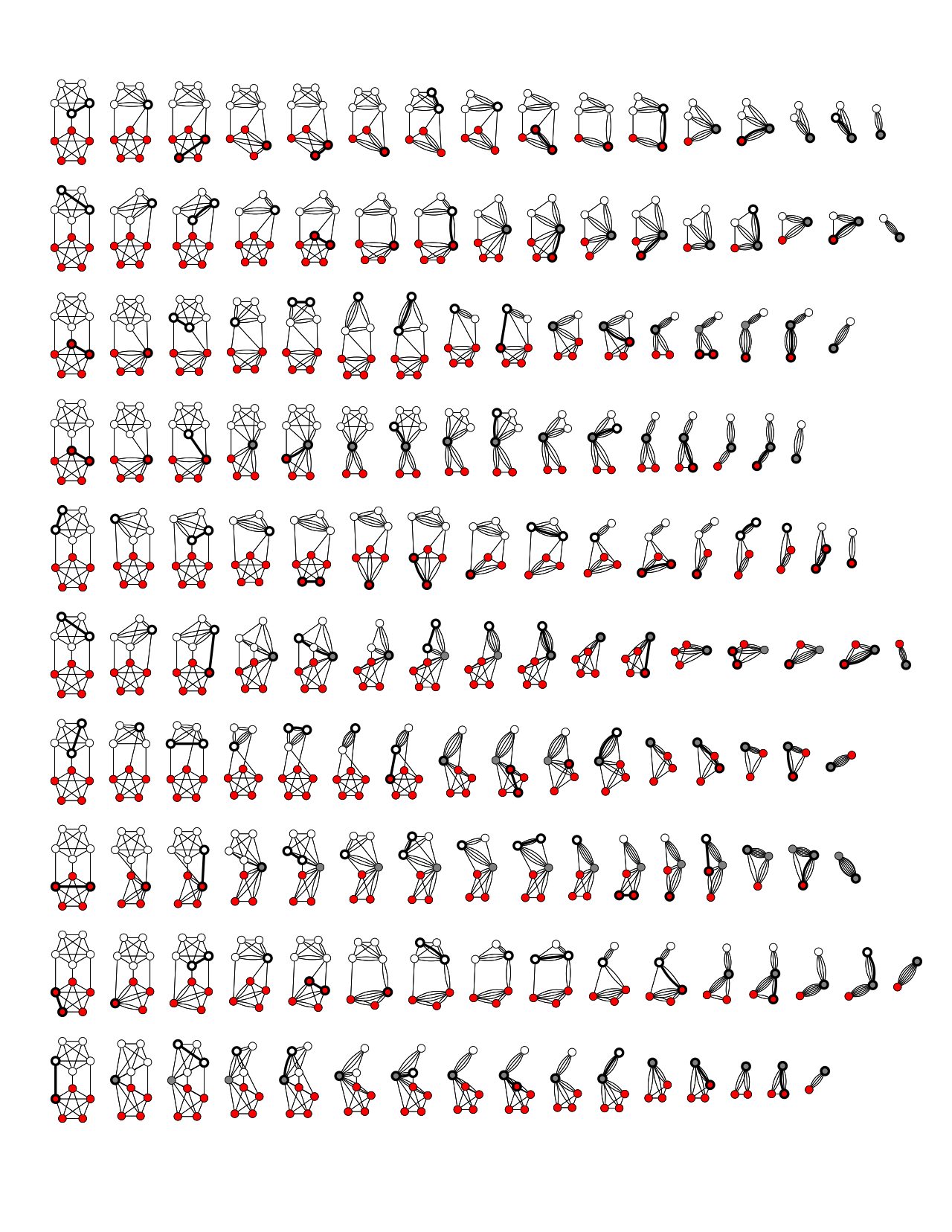Karger's Minimum Cut Algorithm
Karger's algorithm is a randomized algorithm to compute a minimum cut of a connected graph. The algorithm will randomly contract the graph a number of times in order to identify the minimum number of edges that when removed will cause the graph to split into two disjoint subsets that is minimal in some metric.
The key concept behind this algorithm is that the minimum cut relates to a very small subset of edges, hence statistically through random sampling and following a number of trials will always arrive to the graph's optimum cut; the probability to contract such edges is statistically small.
How to find the minimum cut of a graph
The algorithm performs the following steps
- Perform
N * ln(N)contractions of the graph, whereNis the total number of graph nodes- Record the resulting minimum-cut per contraction
- Compare result to current min-cut and if smaller make new min-cut the current
- Return the smallest minimum-cut recorded
The below image shows 10 repetitions of the contraction procedure. The 5th repetition finds the minimum cut of size 3

Implementation approach
Given that we have a way to contract a graph down to two node subsets, all we have to do is to perform N*log(N) trials in order to find the minimum cut.
fn minimum_cut(&self) -> Option<Graph> {
// calculate the number of iterations as N*log(N)
let nodes = self.nodes.len();
let mut iterations = nodes as u32 * nodes.ilog2();
println!("Run Iterations: {iterations}");
// initialise min-cut min value and output as Option
let mut min_cut = usize::MAX;
let mut result = None;
let repetitions = iterations as f32;
// iterate N*log(N) time or exit if min-cut found has only 2 edges
let mut f = f32::MAX;
while iterations != 0 && f > 0.088 {
// contract the graph
if let Some(graph) = self.contract_graph() {
// extract the number of edges
let edges = graph.export_edges();
// count the edges
let edges = edges.len();
// if number of edges returned is smaller than current
// then store the min-cut returned from this iteration
if edges < min_cut {
min_cut = edges;
result = Some(graph);
f = (min_cut as f32).div(repetitions);
println!("({iterations})({f:.3}) Min Cut !! => {:?}", edges);
}
}
iterations -= 1;
}
result
}